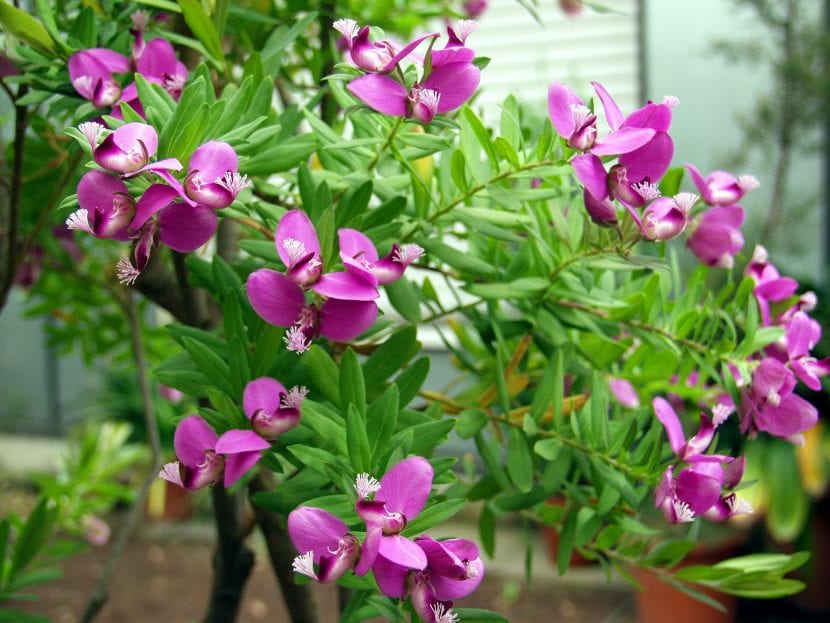
Image - Wikimedia / Raimond Spekking
La Polygala myrtifolia It is, from my own experience, one of the most beautiful and easy-to-care shrubs that exist. In general, it grows as a small tree, although it can be given a compact and rounded shape. In addition, it resists drought without problems, so much so that it is a very interesting species to grow in areas where summer temperatures are high and rainfall rather scarce.
But apart from that, due to its size it is ideal to have both in pots and in the garden. So, if we take all this into account, we only have to know what are your cares. Let's go there 🙂.
Origin and characteristics
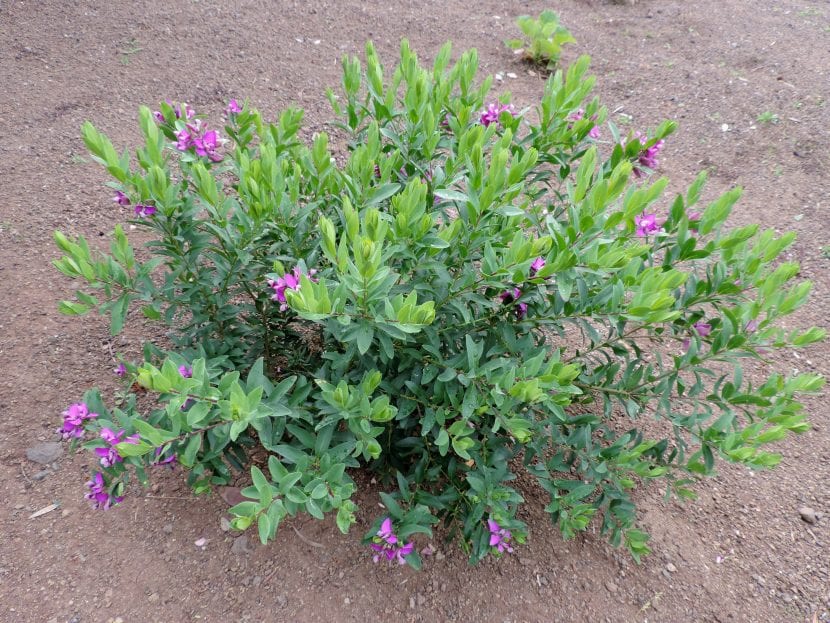
Image - Wikimedia / Krzysztof Ziarnek, Kenraiz
But first of all, let's dig a little deeper. The Polygala myrtifolia, popularly known as polygala, myrtle leaf polygala or Cape milkmaid, is an easily recognizable plant, although if we want to be completely sure that this is the one we need in our patio or garden, we have to know what its characteristics are. As well. This is an evergreen shrub (that is, it remains evergreen) native to South Africa, where it is found both in forests and in dunes, through grasslands, streams and even near dunes.
Reaches a height of 1,5 to 2 meters usually, but can reach 4 meters. Its trunk grows upright, with a rounded crown formed by branches from which oval leaves sprout 25 to 50mm long and up to 13mm wide. The flowers measure about 25mm and appear grouped in inflorescences at the ends of the branches. The fruit is a small, winged capsule.
What are the care of the Polygala myrtifolia?
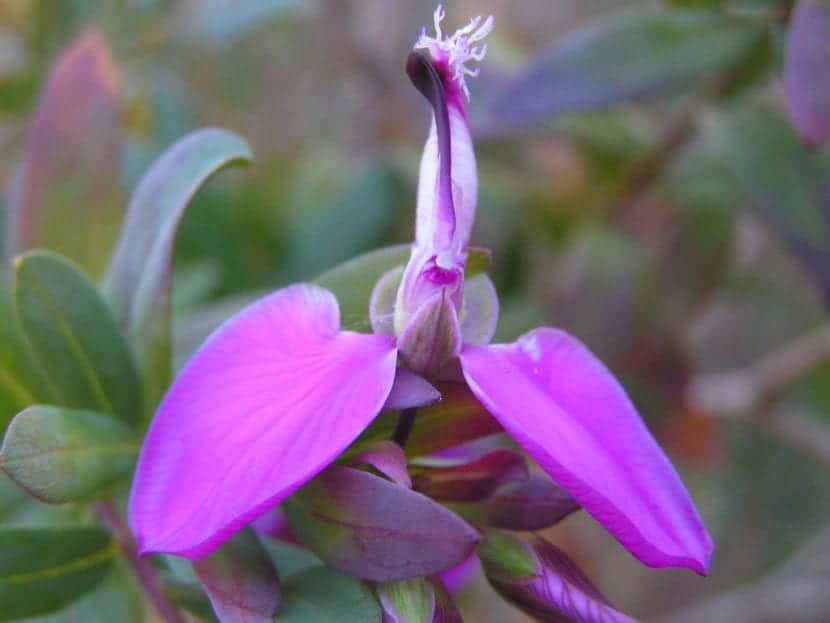
Image - Flickr / Arthur Chapman
Do you want to enjoy this shrub in your garden or patio? Find out how to take care of it:
Location
It is a plant that has to be outside, in full sun. It is a heliophyllo, that is, lover of the star king, so that if we place it in semi-shadow, or let alone in shadow, its health would be weakened to the point that it could run out of leaves at least.
Earth
As it can be grown both in the garden and in a pot, the soil will be different:
- Flower pot: highly recommended to fill it with universal growing substrate (for sale here). But you can also use others such as mulch (for sale here) or the homemade compost.
- Garden: the soil must have very good drainage, and be neutral or chalky. If yours does not meet these characteristics, make a large hole, about 50 x 50cm (better if it is more) and fill it with the substrate mentioned above.
Irrigation
As we said before, it resists drought well but in order for it to grow in good health, it is important that it be watered from time to time, especially if it is potted. The frequency will vary a lot throughout the year, since while in summer it may need about two weekly waterings, the rest may have to water once every ten days or so.
Anyway, at no time do we have to water above. Leaves cannot absorb water directly, and in fact, they can end up rotting if kept wet for too long. This happens because, just like when it rains, the pores on the surface of each leaf remain closed, and that is a problem because the absorption of oxygen, which they then use to breathe, is a task that is suspended.
Another issue that we must talk about is putting a plate under it if it is potted. It's not advisable. If the roots have direct contact with water they can also rot.
Subscriber
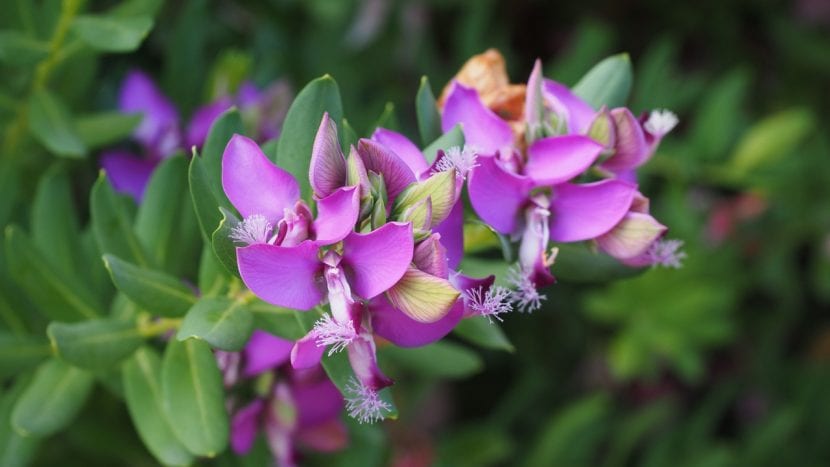
Throughout the warm season, that is, from spring to late summer, it is highly advisable to pay with preferably organic fertilizers, such as guano (for sale here), mulch, egg and banana peels, etc.
Pruning
You don't need it. You just have to cut dry, diseased, weak or broken branches.
Plagues and diseases
Es very resistant, so much so that we will only see that it has problems if it is watered excessively. If this happens, opportunistic fungi will make their appearance and rot their roots.
Planting or transplanting time
In spring, when the risk of frost has passed. If you have it in a pot, move it to a larger one when roots grow out of the drainage holes or every 3-4 years.
Rusticity
La Polygala myrtifolia It is a plant that resists weak and specific frosts of up to -2ºC.
What uses does it have?
The Cape milkmaid is a plant that it is used mainly as an ornamental plant, either in gardens (public or private), as in pots or planters.
But it is also medicinal, being antimicrobial, antifungal and antibacterial.
Where to buy?
This is a shrub that is sold in the nurseries and garden stores. The price is usually around 14 euros for a young specimen 40-50cm tall, but it may vary depending on each nursery / store.
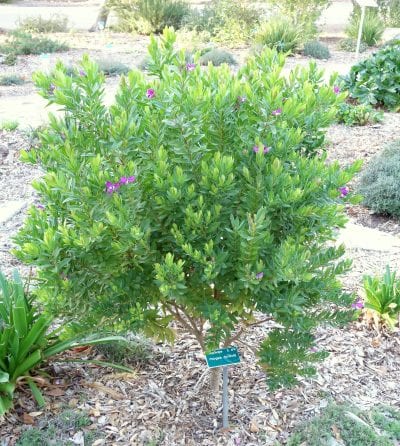
What did you think of Polygala myrtifolia?
Hello, thank you very much for the information. It is the ideal plant for my garden.
Hello Lola.
Great, we're glad to hear that.
Regards!